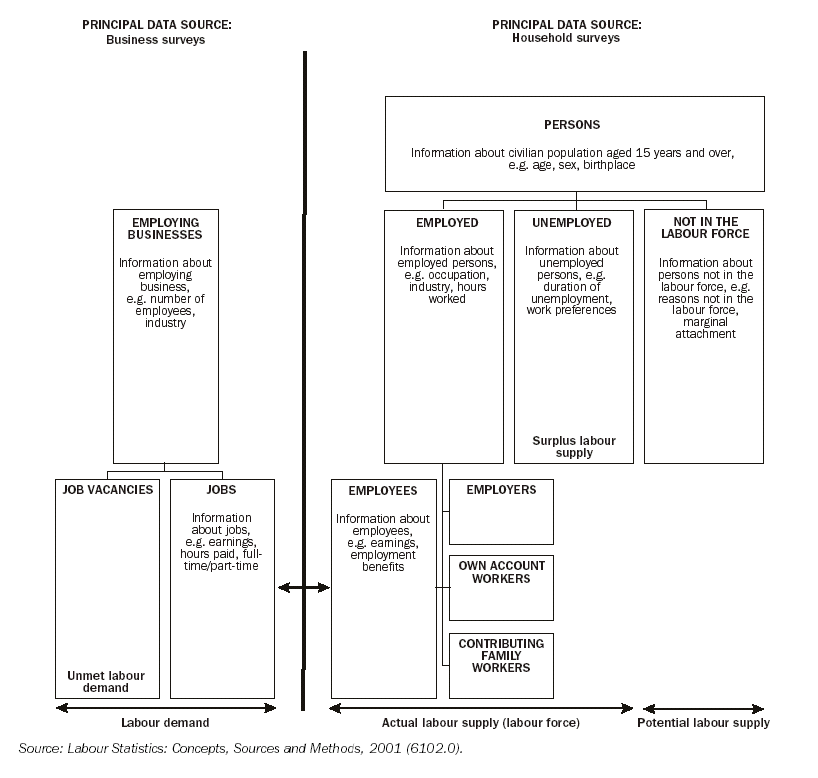The labour market can be viewed from a number of perspectives. Most labour market statistics focus on some aspect of labour demand or labour supply. In Australia, business surveys are the primary source of data on labour demand. The types of data collected through business surveys include labour costs, earnings, jobs and job vacancies. Population censuses and household surveys constitute the primary sources of information about the size and characteristics of labour supply. Information obtained through these types of collections includes data on current and previous labour force experience, as well as demographic data, such as age, sex, family status and country of birth. Diagram 6.1 illustrates the range of ABS labour statistics available from household and business surveys, and broadly how they relate to the labour market.
6.1 THE AUSTRALIAN LABOUR STATISTICS FRAMEWORK

For the purpose of compiling Australian labour market statistics, the population is restricted to persons in the civilian population aged 15 years and over. This practice is based on international guidelines for the collection of labour statistics.
The concepts and definitions underlying Australian labour statistics are based on the conventions, recommendations and guidelines developed and maintained by the International Labour Organisation and the United Nations Statistical Office. Australian labour statistics comply in almost every respect with these international standards.